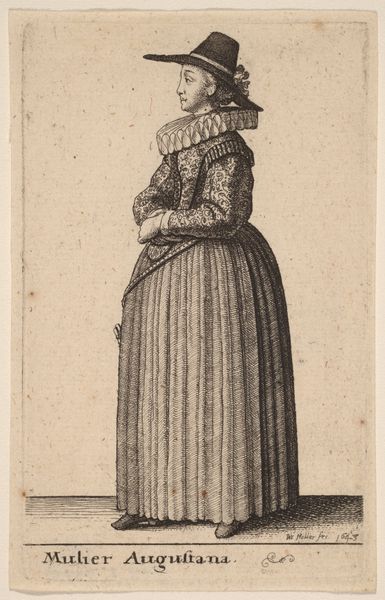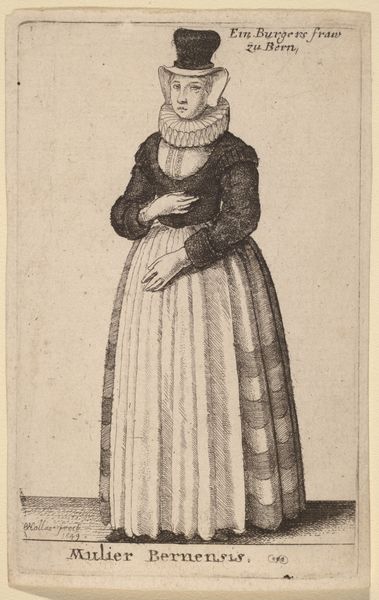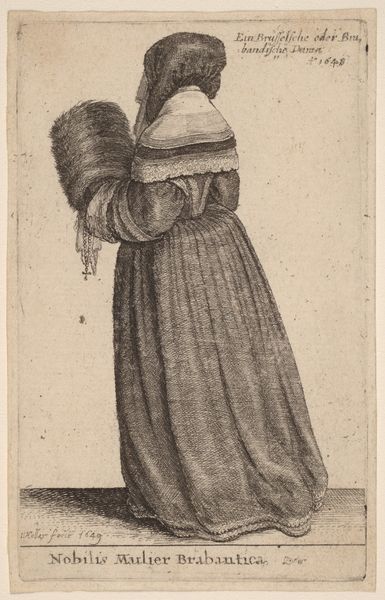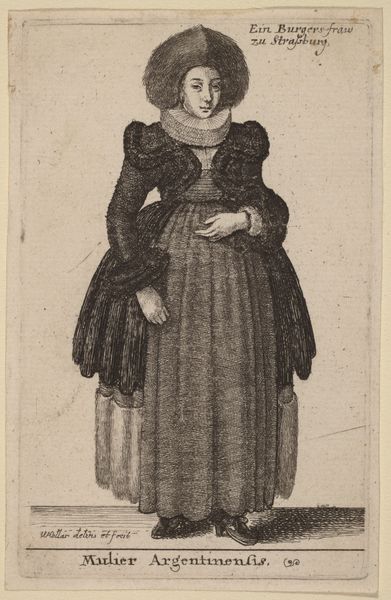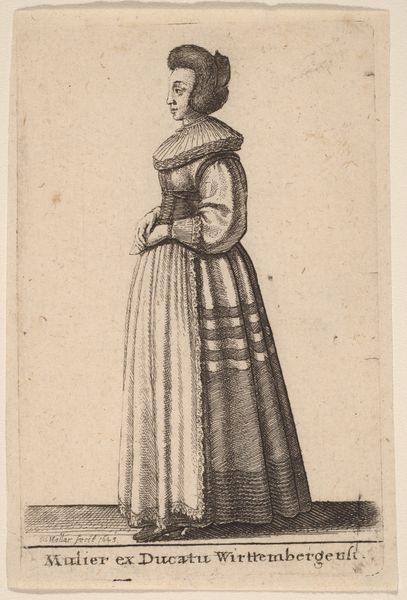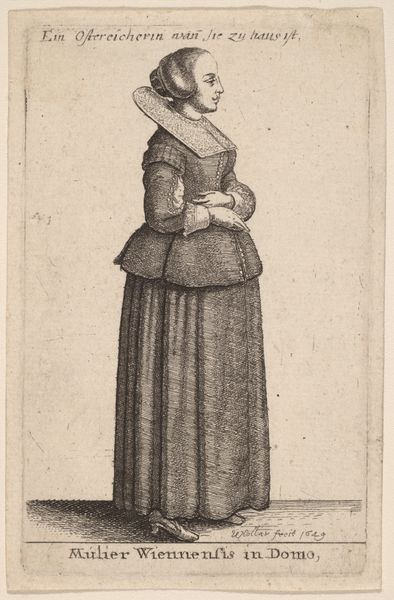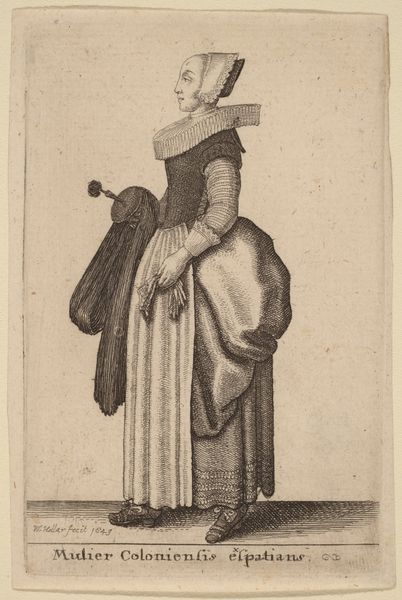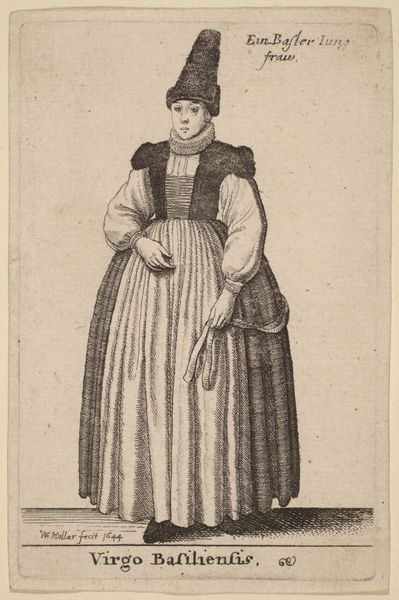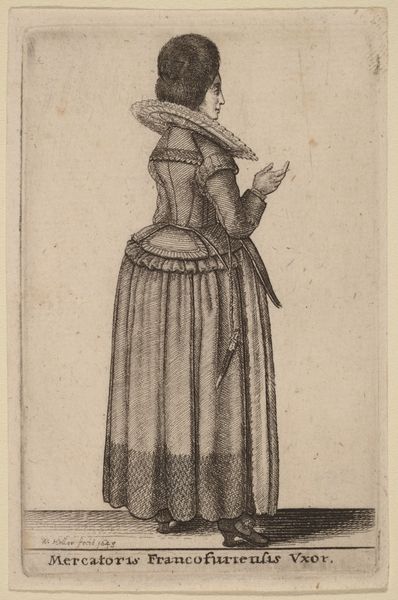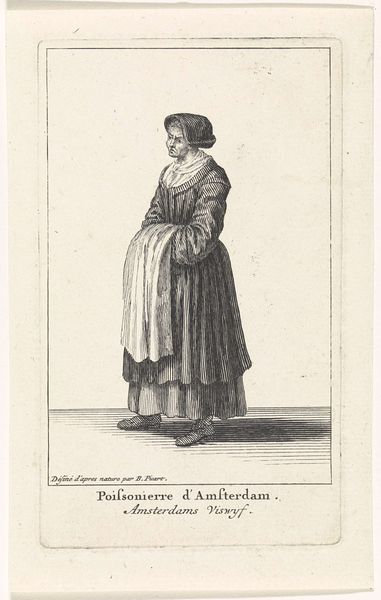
print, engraving
#
portrait
#
baroque
# print
#
history-painting
#
engraving
Copyright: National Gallery of Art: CC0 1.0
Curator: This engraving, titled Mulier Svevica vel Augustana, created by Wenceslaus Hollar in 1643, offers us a glimpse into the attire of women during the Baroque era. It’s a beautiful example of portraiture through printmaking. Editor: The incredible fineness of the lines! I'm immediately drawn to how tactile it feels despite being a print. You can almost feel the texture of her fur cap and the crispness of that elaborate ruff. I wonder about the specific processes he used to achieve that level of detail. Curator: Hollar was a master of etching and engraving. He utilized those techniques to disseminate knowledge about different cultures, capturing fashionable attire in different regions. This piece depicts what was considered stylish among women from Swabia or Augsburg, then a significant cultural center in southern Germany. Notice how the fashion itself reinforces the image of female respectability in this place and time, during the 30 Years War. Editor: That’s interesting. I was focusing on the labor involved: the way the textile would have been woven, the process of constructing and embellishing those garments, and the social implications of dressing in that way. Consider the weight of all those materials; that outfit represents significant resources, doesn’t it? And look at the chain and chatelaine, dangling keys and implements–literally tools of a trade or craft. Curator: Indeed. These prints served as both documents of material culture and status symbols. Owning prints, displaying them – these actions declared one’s own awareness of contemporary fashion and politics. It's important to remember how printmaking made images available to a much wider public. Editor: It shifts my perception, thinking about it in terms of mass production rather than individual artistic genius. Though, obviously, Hollar was incredibly skilled. Considering the means of production also raises questions about labor and accessibility. Who was producing the paper, mixing the inks, and operating the presses? It brings a whole network of people into view. Curator: Exactly. Thinking about how art is embedded in its time, how materials and their reproduction have impacts both economically and culturally really brings so much more to our experience of a single image. Editor: Agreed! And now when I see it, I can think about the actual labor and materials, like that meticulously etched ruff and the implied weight of her garments, giving me a far deeper, richer reading of the work.
Comments
No comments
Be the first to comment and join the conversation on the ultimate creative platform.
